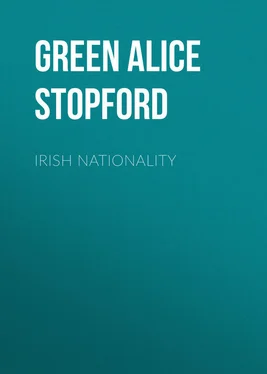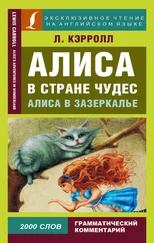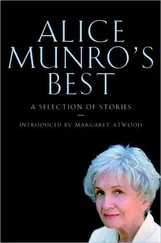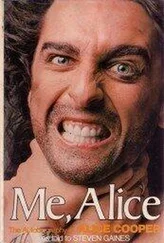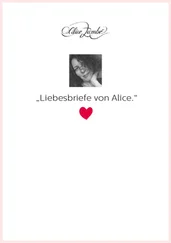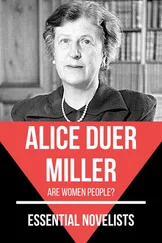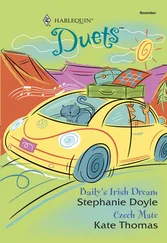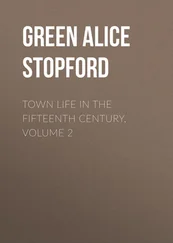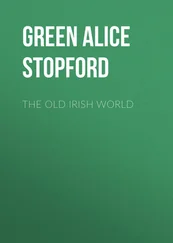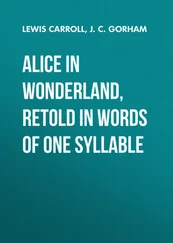Alice Green - Irish Nationality
Здесь есть возможность читать онлайн «Alice Green - Irish Nationality» — ознакомительный отрывок электронной книги совершенно бесплатно, а после прочтения отрывка купить полную версию. В некоторых случаях можно слушать аудио, скачать через торрент в формате fb2 и присутствует краткое содержание. Жанр: literature_20, foreign_antique, foreign_prose, Историческая проза, на английском языке. Описание произведения, (предисловие) а так же отзывы посетителей доступны на портале библиотеки ЛибКат.
- Название:Irish Nationality
- Автор:
- Жанр:
- Год:неизвестен
- ISBN:нет данных
- Рейтинг книги:5 / 5. Голосов: 1
-
Избранное:Добавить в избранное
- Отзывы:
-
Ваша оценка:
- 100
- 1
- 2
- 3
- 4
- 5
Irish Nationality: краткое содержание, описание и аннотация
Предлагаем к чтению аннотацию, описание, краткое содержание или предисловие (зависит от того, что написал сам автор книги «Irish Nationality»). Если вы не нашли необходимую информацию о книге — напишите в комментариях, мы постараемся отыскать её.
Irish Nationality — читать онлайн ознакомительный отрывок
Ниже представлен текст книги, разбитый по страницам. Система сохранения места последней прочитанной страницы, позволяет с удобством читать онлайн бесплатно книгу «Irish Nationality», без необходимости каждый раз заново искать на чём Вы остановились. Поставьте закладку, и сможете в любой момент перейти на страницу, на которой закончили чтение.
Интервал:
Закладка:
Alice Stopford Green
Irish Nationality
CHAPTER I
THE GAELS IN IRELAND
Ireland lies the last outpost of Europe against the vast flood of the Atlantic Ocean; unlike all other islands it is circled round with mountains, whose precipitous cliffs rising sheer above the water stand as bulwarks thrown up against the immeasurable sea.
It is commonly supposed that the fortunes of the island and its civilisation must by nature hang on those of England. Neither history nor geography allows this theory. The life of the two countries was widely separated. Great Britain lay turned to the east; her harbours opened to the sunrising, and her first traffic was across the narrow waters of the Channel and the German Sea. But Ireland had another aspect; her natural harbours swelled with the waves of the Atlantic, her outlook was over the ocean, and long before history begins her sailors braved the perils of the Gaulish sea. The peoples of Britain, Celts and English, came to her from the opposite lowland coasts; the people of Ireland crossed a wider ocean-track, from northern France to the shores of the Bay of Biscay. The two islands had a different history; their trade-routes were not the same; they lived apart, and developed apart their civilisations.
We do not know when the Gaels first entered Ireland, coming according to ancient Irish legends across the Gaulish sea. One invasion followed another, and an old Irish tract gives the definite Gaelic monarchy as beginning in the fourth century B.C. They drove the earlier peoples, the Iberians, from the stupendous stone forts and earthen entrenchments that guarded cliffs and mountain passes. The name of Erin recalls the ancient inhabitants, who lived on under the new rulers, more in number than their conquerors. The Gaels gave their language and their organisation to the country, while many customs and traditions of the older race lingered on and penetrated the new people.
Over a thousand years of undisturbed life lay before the Gaels, from about 300 B.C. to 800 A.D. The Roman Empire which overran Great Britain left Ireland outside it. The barbarians who swept over the provinces of the empire and reached to the great Roman Wall never crossed the Irish Sea.
Out of the grouping of the tribes there emerged a division of the island into districts made up of many peoples. Each of the provinces later known as Ulster, Leinster, Munster and Connacht had its stretch of seaboard and harbours, its lakes and rivers for fishing, its mountain strongholds, its hill pastures, and its share of the rich central plain, where the cattle from the mountains "used to go in their running crowds to the smooth plains of the province, towards their sheds and their full cattle-fields." All met in the middle of the island, at the Hill of Usnech, where the Stone of Division still stands. There the high-king held his court, as the chief lord in the confederation of the many states. The rich lands of Meath were the high-king's domain.
Heroic tales celebrate the prehistoric conflicts as of giants by which the peoples fixed the boundaries of their power. They tell of Conor Mac Nessa who began to reign in the year that Mark Antony and Cleopatra died, and of his sister's son Cuchulain, the champion of the north, who went out to battle from the vast entrenchments still seen in Emain Macha near Armagh. Against him Queen Maeve gathered at her majestic fort of Rathcroghan in Roscommon fifteen hundred royal mercenaries and Gaulish soldiers – a woman comely and white-faced, with gold yellow hair, her crimson cloak fastened at the breast with a gold pin, and a spear flaming in her hand, as she led her troops across the Boyne. The battles of the heroes on the Boyne and the fields of Louth, the thronged entrenchments that thicken round the Gap of the North and the mountain pass from Dundalk and Newry into the plains of Armagh and Tyrone, show how the soldiers' line of march was the same from the days of Cuchulain to those of William of Orange. The story tells how the whole island shared in the great conflict, to the extreme point of Munster, where a rival of Cuchulain, Curoi son of Dare, had sent his knights and warriors through all Ireland to seek out the greatest stones for his fortress, on a shelf of rock over two thousand feet above the sea near Tralee. The Dublin Museum preserves relics of that heroic time, the trappings of war-chariots and horses, arms and ornaments.
Amid such conflicts the Connacht kings pressed eastward from Usnech to Tara, and fixed there the centre of Irish life.
The Gaelic conquerors had entered on a wealthy land. Irish chroniclers told of a vast antiquity, with a shadowy line of monarchs reaching back, as they boasted, for some two thousand years before Christ: they had legends of lakes springing forth in due order; of lowlands cleared of wood, the appearance of rivers, the making of roads and causeways, the first digging of wells: of the making of forts; of invasions and battles and plagues. They told of the smelting of gold near the Liffey about 1500 B.C. and of the Wicklow artificer who made cups and brooches of gold and silver, and silver shields, and golden chains for the necks of kings; and of the discovery of dyes, purple and blue and green, and how the ranks of men were distinguished henceforth by the colour of their raiment. They had traditions of foreign trade – of an artificer drowned while bringing golden ore from Spain, and of torques of gold from oversea, and of a lady's hair all ablaze with Alpine gold. Later researches have in fact shown that Irish commerce went back some fifteen hundred years before our era, that it was the most famous gold-producing country of the west, that mines of copper and silver were worked, and that a race of goldsmiths probably carried on the manufacture of bronze and gold on what is now the bog of Cullen. Some five hundred golden ornaments of old times have been gathered together in the Dublin Museum in the last eighty years, a scanty remnant of what have been lost or melted down; their weight is five hundred and seventy ounces against a weight of twenty ounces in the British Museum from England, Scotland, and Wales.
The earth too was fruitful. The new settlers, who used iron tools instead of bronze, could clear forests and open plains for tillage. Agriculture was their pride, and their legends told of stretches of corn so great that deer could shelter in them from the hounds, and nobles and queens drove chariots along their far-reaching lines, while multitudes of reapers were at work cutting the heads of the grain with the little sickles which we may still see in the Dublin Museum.
But to the Irish the main interest of the Gaels lies in their conception of how to create an enduring state or nation.
The tribal system has been much derided as the mark of a savage people, or at least of a race unable to advance beyond political infancy into a real national existence. This was not true of the Gaels. Their essential idea of a state, and the mode of its government and preservation, was different from that of mediæval Europe, but it was not uncivilised.
The Roman Empire stamped on the minds of its subject peoples, and on the Teutonic barbarians who became its heirs, the notion of a state as an organisation held together, defended, governed and policed, by a central ruler; while the sovereign was supreme in the domain of force and maintenance of order, whatever lay outside that domain – art, learning, history and the like – were secondary matters which might be left to the people. The essential life of the nation came to be expressed in the will and power of its master.
The Gaelic idea was a wholly different one. The law with them was the law of the people. They never lost their trust in it. Hence they never exalted a central authority, for their law needed no such sanction. While the code was one for the whole race, the administration on the other hand was divided into the widest possible range of self-governing communities, which were bound together in a willing federation. The forces of union were not material but spiritual, and the life of the people consisted not in its military cohesion but in its joint spiritual inheritance – in the union of those who shared the same tradition, the same glorious memory of heroes, the same unquestioned law, and the same pride of literature. Such an instinct of national life was neither rude nor contemptible, nor need we despise it because it was opposed to the theory of the middle ages in Europe. At the least the Irish tribal scheme of government contained as much promise of human virtue and happiness as the feudal scheme which became later the political creed of England, but which was never accepted in Ireland. Irish history can only be understood by realising this intense national life with its sure basis on the broad self-government of the people.
Читать дальшеИнтервал:
Закладка:
Похожие книги на «Irish Nationality»
Представляем Вашему вниманию похожие книги на «Irish Nationality» списком для выбора. Мы отобрали схожую по названию и смыслу литературу в надежде предоставить читателям больше вариантов отыскать новые, интересные, ещё непрочитанные произведения.
Обсуждение, отзывы о книге «Irish Nationality» и просто собственные мнения читателей. Оставьте ваши комментарии, напишите, что Вы думаете о произведении, его смысле или главных героях. Укажите что конкретно понравилось, а что нет, и почему Вы так считаете.
